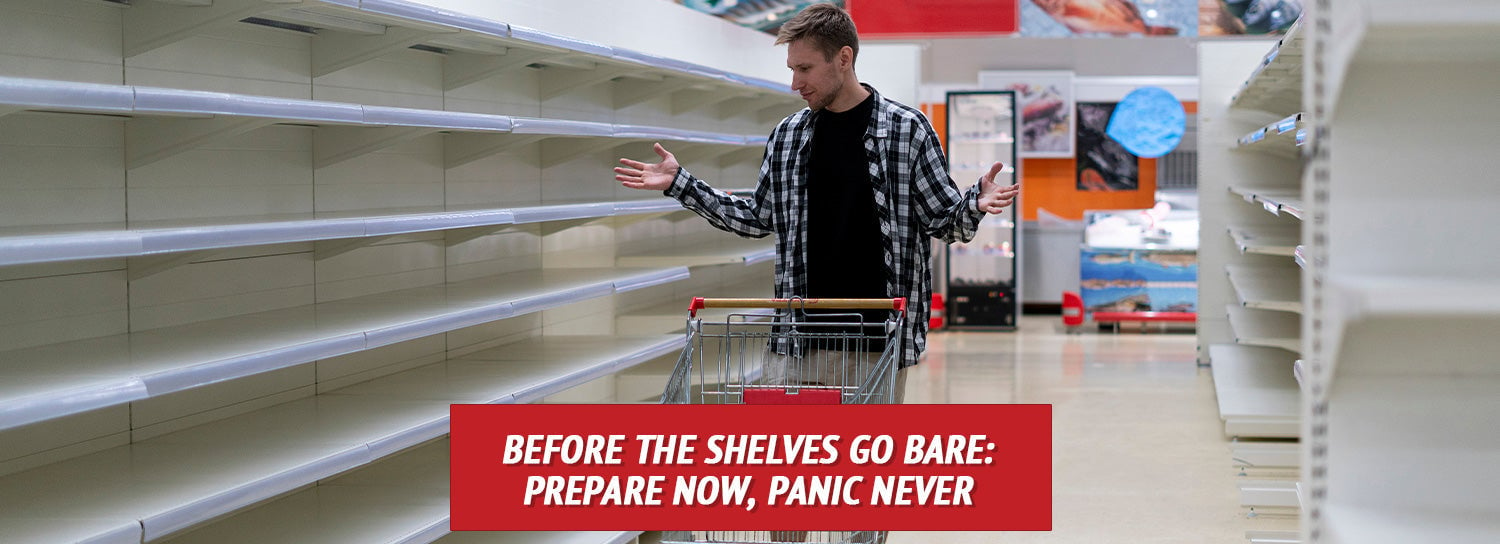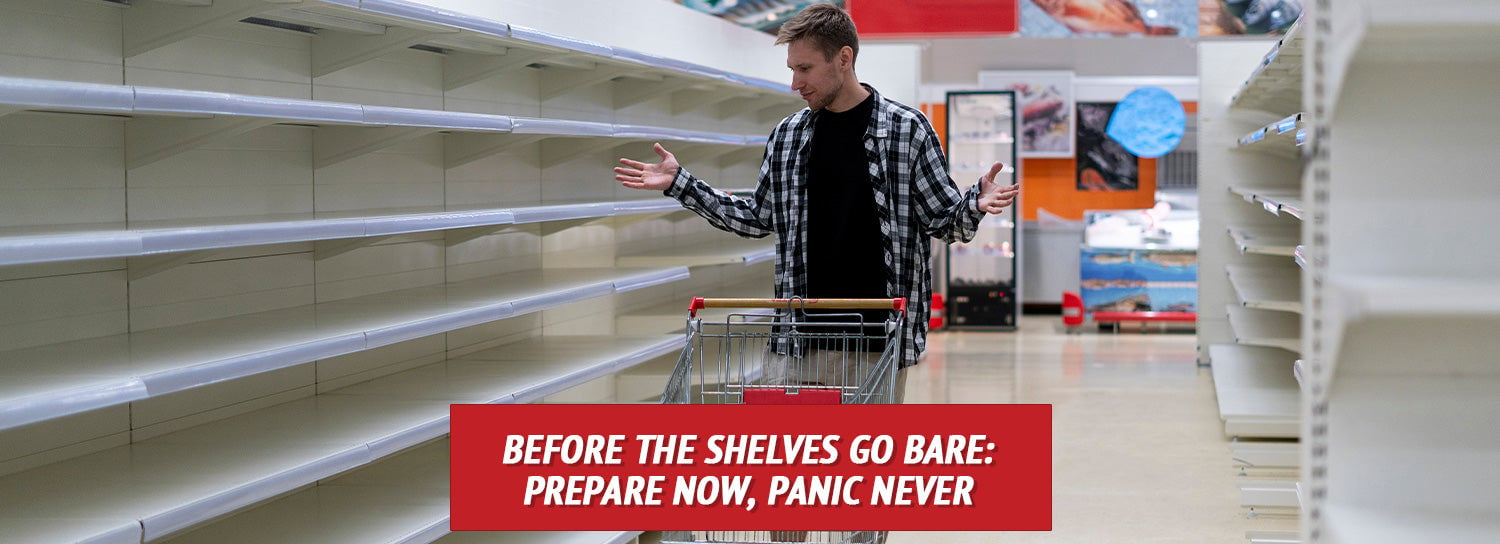
It’s an interesting and uncertain moment in America right now. Between rising tariffs, shifting trade relationships, and new economic policy changes, the ripple effects are already starting…higher prices, slower imports, and growing strain on everyday essentials.
No one can say for sure how long this will last…or how it’s going to play out.
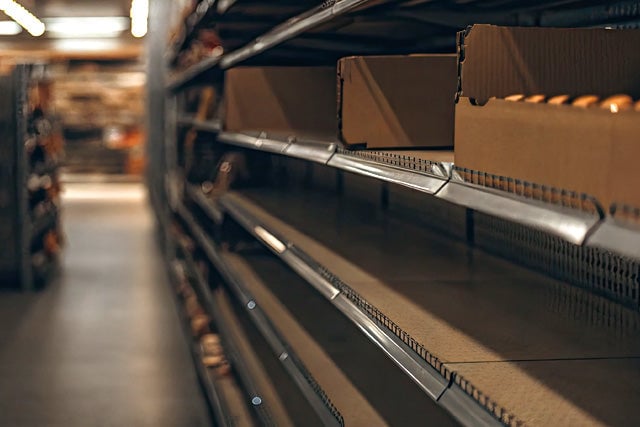
Talking heads, experts, and business leaders all have an opinion about just how empty US shelves will be, for how long, and what items will disappear first.
It’s a lot. It’s confusing. And it’s changing by the day.
Here’s what we do know: When shipments slow, shelves thin out – and when shelves go empty, panic follows fast.
We saw it in 2020, and we’re seeing early signs again.
But this isn’t about fear.
It’s about resilience.
We’re not here to scare you – we’re here to help you stay steady. That means understanding what’s actually happening, how supply chain pressure snowballs fast, what goods are at risk, and what you can do right now to stay ahead of the chaos.
How Tariffs & Trade Tensions Are Choking the Supply Chain
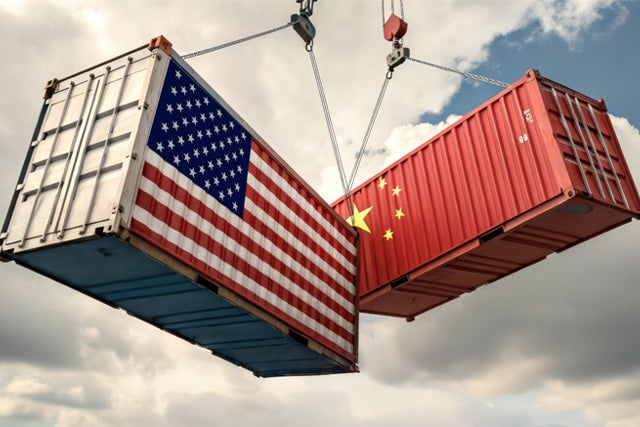
The Trump administration levied a 145% tariff against Chinese goods, with Beijing retaliating through a 125% tariff on US exports.
These tariffs include a 100% duty on electric vehicles from China, plus new levies on batteries, solar cells, steel, and aluminum.
The goal: To reduce dependency on Chinese manufacturing and bring production back home.
And we agree – supporting American-made goods matters.
But the reality is, we’re not fully there yet.
Domestic production takes time to scale. Until it does, we need to prepare for the gaps and delays in what we still rely on from abroad.
Also, Vietnam, India, and Mexico – all of whom export a whole lot of food to the US – are also facing tariffs that could impact our food supply.
Manufacturing orders from China are already dropping, and freight vessel bookings to the US are plummeting.
Reports show container traffic has declined by as much as 60% since early April.
When fewer shipments are coming in, the supply chain falters.
According to Casey Armstrong, CMO of ShipBob, a global fulfillment and supply chain platform, “The U.S. retail system is built on speed and scale. When that engine stutters – whether from tariffs, customs delays, or sourcing constraints – it’s the lowest-margin, fastest-moving goods that disappear first.”
He claims these disappearing lower-priced import items “are the canaries in the coal mine of a disrupted supply chain.”
According to port authorities at Seattle and Tacoma – two of the country’s largest maritime gateways – volume is expected to drop sharply in the coming months.
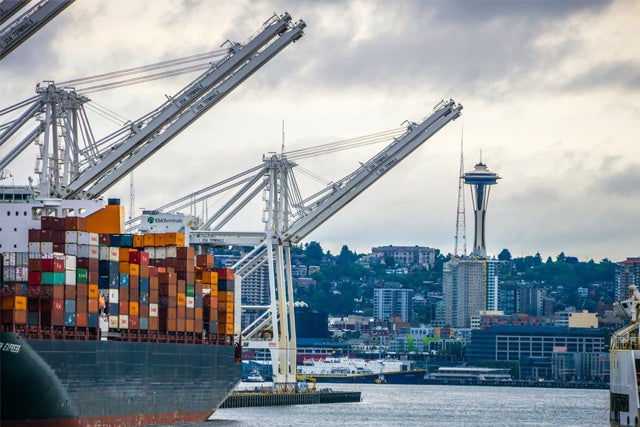
That matters because most goods Americans buy, from electronics to household necessities, pass through these ports before hitting store shelves.
As Port of Tacoma Commissioner Kristin Ang warned, “We are in uncharted waters when it comes to how long these disruptions might last or how deeply they’ll affect U.S. consumers.”
Ryan Calkins, Seattle's port commissioner said this week, “I'm looking out at the Port of Seattle right now, and we currently have no container ships.”
The last time he saw this? During the height of the pandemic.
Port of Los Angeles Executive Director Gene Seroka said he anticipates incoming cargo volume to drop by over a third compared to 2024.
"According to our own port optimizer, which measures the loadings in Asia, we'll be down just a little bit over 35 percent next week compared to last year," Seroka said. "And it's a precipitous drop in volume with a number of major American retailers stopping all shipments from China based on the tariffs."
Because of this, analysts have already begun to predict when Americans will feel the effects of the tariff supply chain slowdown.
A report by Apollo Global Management estimates it takes 20 to 40 days for a containership to reach US ports and 1 to 10 days for goods to travel to cities.
The report suggests that, by the middle of May, containerships to US ports will come to a stop and by late May, shelves will start to empty.
Michael O’Rourke, chief market strategist at Jones Trading, recently stated, “There has been reporting that the leadership of those companies told the president that by mid-May they would be running out of inventory and Americans would need to prepare for pandemic-like shortages if policy did not adjust.”
This is how it starts. Slower imports mean delayed deliveries. Delayed deliveries lead to low inventories.
And when store shelves go bare, panic buying follows.
The Supply Chain Snowball Effect
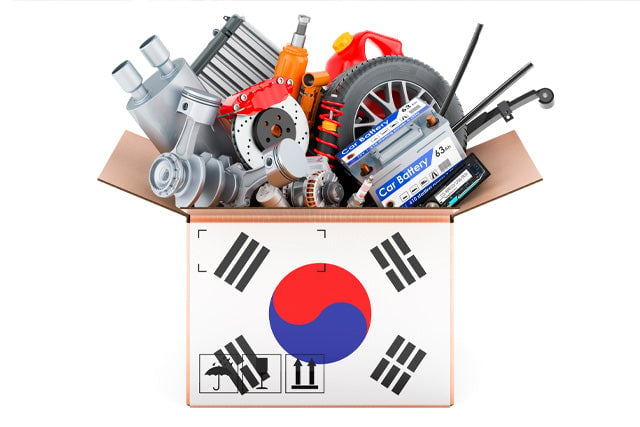
If one part of the supply chain stalls, it affects the rest of the supply chain.
Economist George Alessandria explains, “It’s like a river where stuff is heading downstream, but something blocks the flow of materials. It just takes longer for people to get the parts they need to produce. And that results in consumers not seeing items on store shelves.”
He continues, “It could be that there’s a $1 part in a $25,000 car that isn’t available, so the car can’t be fully manufactured and sold. In other cases, operations at a company that’s the single supplier of a part – such as a microprocessor – may suddenly stop because of a fire or some other reason.”
A perfect example is Lysol products, which were difficult to find during the 2020 pandemic.
This is because Lysol wipes contain a certain ingredient (polyester spunlace) that was in high demand but was in short supply. Without polyester spunlace, Lysol wipes cannot be made.
When the supply chain includes imports from China, it can cause serious issues for American consumers.
The Atlantic reports, “When China went into lockdown in late January [2020] to stanch the spread of the coronavirus, the country’s enormous manufacturing sector screeched to a halt. That paralyzed the flow of all kinds of things into the United States – strollers, gym clothes, Nintendo Switch consoles, and crucial components for products assembled in other countries, such as textiles for clothing and parts for cellphones and computers. When those components disappeared, some assembly lines in countries such as Vietnam and South Korea went idle, compounding the crisis in the U.S.”
Now, we are seeing a similar event taking place, as far fewer goods are being imported from China.
While we believe we should buy American when we can, the truth is that we simply do not have everything here in the United States (at least not yet).
Products We May See Disappear from Shelves
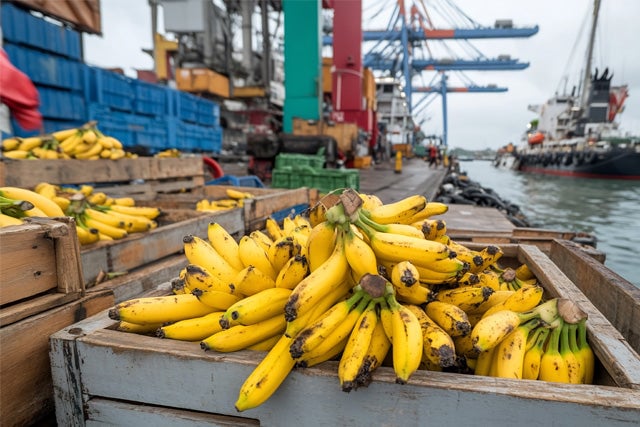
We cannot predict the future and exactly what we may see less of.
Policy can shift in an instant, and any of this is subject to change.
As of publication, here’s a list of items you may see less of – or pay way more for.
Let’s start with food.
“15% of the U.S. food supply is imported, including 32% of fresh vegetables, 55% of fresh fruit, and 94% of seafood,” according to the Consumer Federation of America. “Some products, like coffee and bananas, are almost exclusively grown abroad.”
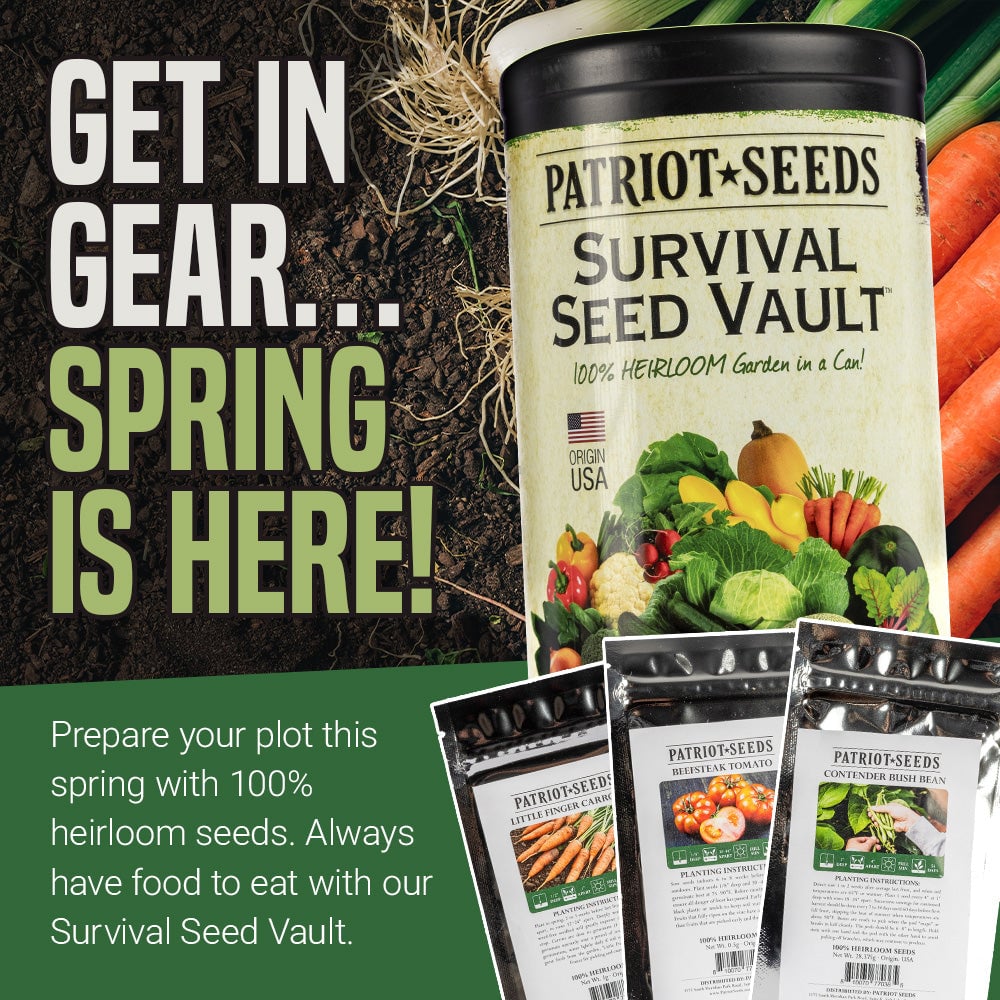
Tomatoes: While tariffs on Mexican avocados are on pause, a 17.9% duty on fresh Mexican tomatoes is set to start July 14.
Mexico supplies about 70 percent of the tomatoes consumed in the US.
If this goes into effect, prices are expected to spike 40 to 50% according to the Fresh Produce Association of the Americas.
Declare your food independence with our 100% heirloom Survival Seed Vault.
Rice: Basmati and jasmine imports now face tariffs up to 36%.
Considering 30% of US rice is imported – and nearly all specialty varieties come from Asia – costs are rising fast.
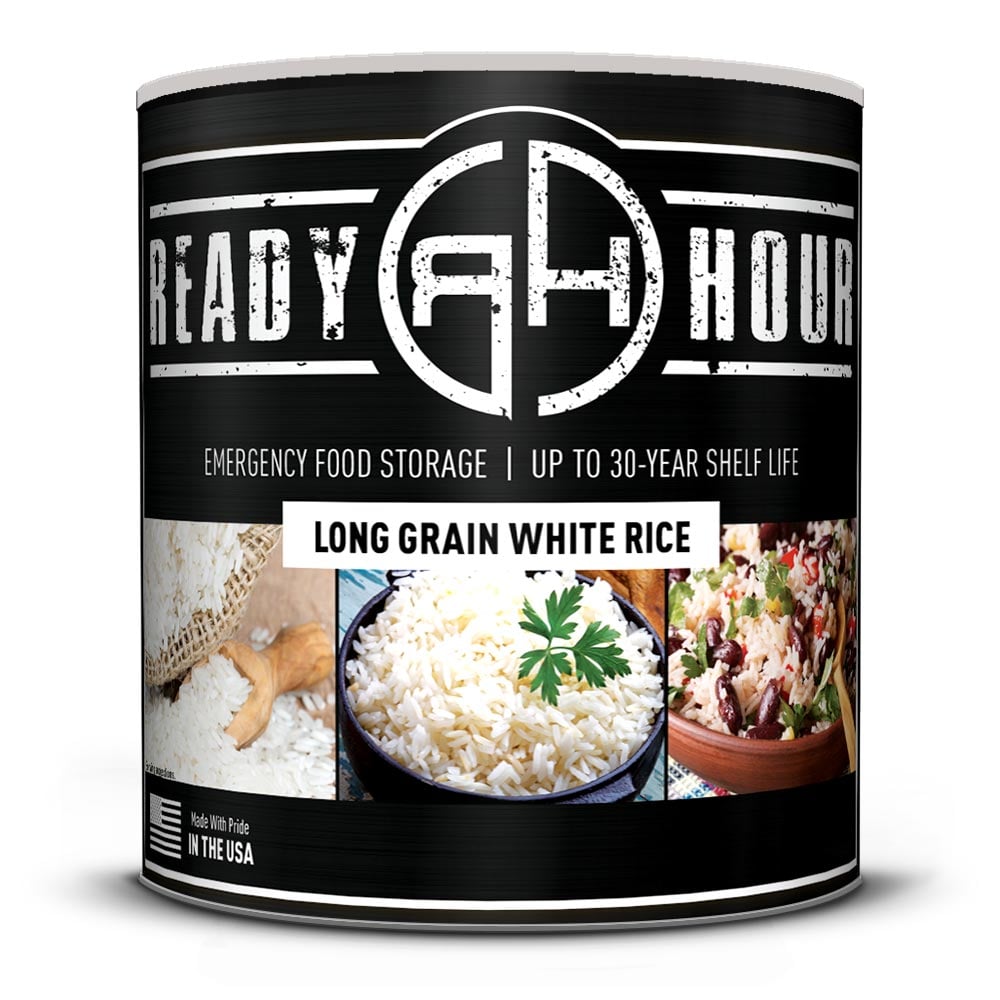
Why worry about the future cost of rice? Stock up now and save money. Check out our Long Grain White Rice #10 Cans.
Spices: Spice imports, especially black pepper from Vietnam, are being hit with up to 46% tariffs.
With 60% of US spices imported, prices are already climbing 15 to 20%, and sporadic shortages are expected.
Toys: The toy industry may be one of the hardest hit.
According to Interos.ai, tariffs on toys from China could drive up US costs by over $46.5 billion in 2025 alone – on top of the $32 billion value of imports from 2024.
Since 80% of US toys are manufactured in China, shelves could go bare by the holiday season, with fewer choices and much higher prices.
Even President Trump acknowledged the coming impact, stating, “Maybe the children will have two dolls instead of 30 dolls, and maybe the two dolls will cost a couple of bucks more.”
Rechargeable Batteries: Think of how many essentials use them: Flashlights, radios, solar-powered gear.
These will see a price surge as tariffs push the cost of imported electric accumulators to $44 billion, up from $18.1 billion last year.
Clothing: Apparel costs are expected to more than double, from $15.7 billion in 2024 to $38.5 billion in 2025 under the current tariffs.
That means higher prices on basics – and potential shortages – if retailers can't afford to stock the same inventory.
Ways You Can Prepare for Whatever Comes
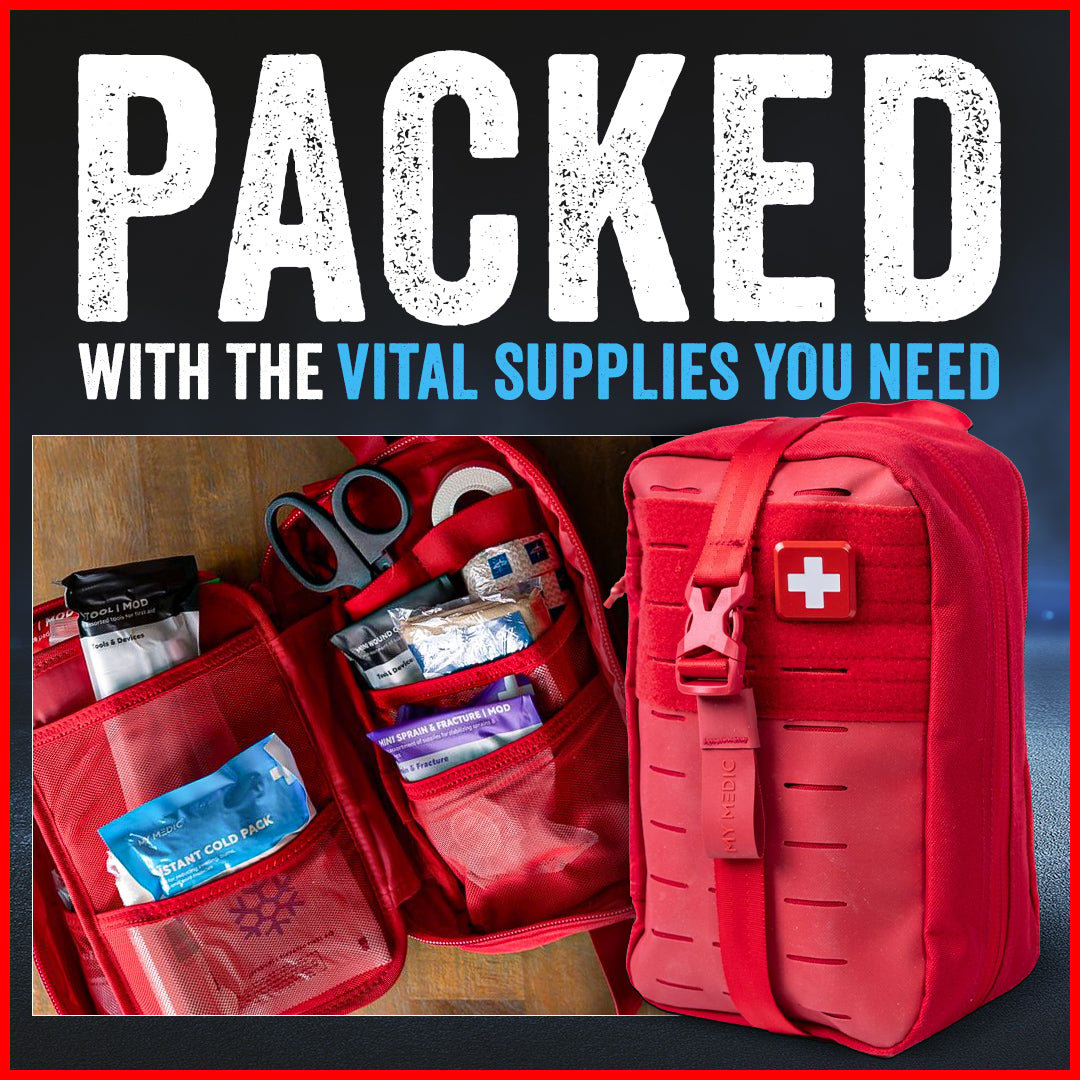
Whether or not shelves actually go empty, panic is the real threat.
We’ve seen it before.
When the pandemic hit, stores were stripped bare.
Toilet paper, rice, canned food, flour, water – gone.
Not because supply vanished overnight, but because people did what they always do when fear sets in: They panic buy.
We’re not saying the exact same thing will happen now.
But with supply chains straining and store prices surging, it won’t take much to spark another wave of chaos.
And once panic hits, it’s already too late.
Here’s how to get ahead of it:
- Purchase emergency food. Emergency food is always a smart investment. Not only because it is lifesaving in emergencies, but also because it is a budget-friendly way to stock up on food essentials. My Patriot Supply has many products that people use regularly – sugar, flour, eggs, soups, etc. These are the types of food items that will disappear from grocery store shelves when panic sets in. Additionally, items like coffee are good to buy from My Patriot Supply given that most of America’s coffee is imported. Get emergency food now, get it in bulk, and don’t worry about high-tariff prices or panic.
- Buy heirloom seeds. There is no better way to be food independent than to grow your own fruits and vegetables. Invest in a Patriot Seed Survival Seed Vault and grow your own food year after year.
- Look for substitutions. Stick to foods grown or produced in the US whenever possible. Many specialty imports have high-tariff counterparts made domestically. The key is flexibility…trade brand loyalty for food security and savings.
- Shop local. Ditch the big box retailers and shop locally. Get to know your butcher, small farmers, and other vendors.
- Stock up on first aid and medications. It’s always wise to keep your first aid kit fully stocked, but even more so now, when imported OTC medications from China are going to be harder to find.
- Stop throwing things away. Today’s trash might be tomorrow’s tool. Save jars, containers, clothes, and materials that could be reused, repaired, or repurposed. Waste less, adapt more.
- Turn off the noise. The headlines will keep spinning. But panic doesn’t help – preparation does. You don’t need fear. You need a plan.
The more prepared you are, the less you have to worry.
And the less you have to depend on systems that may not be there when you need them most.
Remember, friends, the goal isn’t fear – it’s freedom from it.
In liberty,
Elizabeth Anderson
Preparedness Advisor, My Patriot Supply


